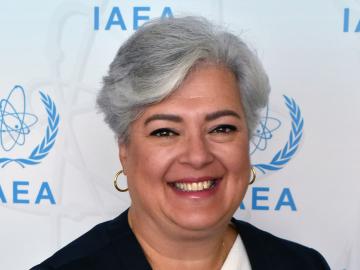
Filter News
Area of Research
- (-) Fusion and Fission (54)
- (-) Materials Characterization (2)
- (-) National Security (80)
- (-) Supercomputing (311)
- Advanced Manufacturing (34)
- Biological Systems (18)
- Biology and Environment (177)
- Biology and Soft Matter (5)
- Building Technologies (12)
- Chemical and Engineering Materials (4)
- Chemistry and Physics at Interfaces (11)
- Clean Energy (522)
- Climate and Environmental Systems (14)
- Computational Biology (6)
- Computational Chemistry (5)
- Computational Engineering (5)
- Computer Science (19)
- Data (1)
- Earth Sciences (1)
- Electricity and Smart Grid (3)
- Energy Frontier Research Centers (14)
- Energy Sciences (5)
- Fossil Energy (3)
- Fuel Cycle Science and Technology (3)
- Functional Materials for Energy (16)
- Fusion Energy (17)
- Geographic Information Science and Technology (3)
- Isotope Development and Production (3)
- Isotopes (35)
- Materials (433)
- Materials for Computing (36)
- Materials Synthesis from Atoms to Systems (13)
- Materials Under Extremes (12)
- Mathematics (1)
- Neutron Data Analysis and Visualization (4)
- Neutron Science (190)
- Nuclear Science and Technology (74)
- Nuclear Systems Modeling, Simulation and Validation (3)
- Nuclear Systems Technology (1)
- Quantum Condensed Matter (4)
- Quantum information Science (9)
- Reactor Technology (1)
- Renewable Energy (4)
- Sensors and Controls (5)
- Transportation Systems (11)
News Type
News Topics
- 3-D Printing/Advanced Manufacturing (9)
- Advanced Reactors (8)
- Artificial Intelligence (45)
- Big Data (22)
- Bioenergy (12)
- Biology (15)
- Biomedical (18)
- Biotechnology (3)
- Buildings (5)
- Chemical Sciences (9)
- Climate Change (20)
- Composites (1)
- Computer Science (104)
- Coronavirus (16)
- Critical Materials (4)
- Cybersecurity (23)
- Decarbonization (8)
- Energy Storage (12)
- Environment (26)
- Exascale Computing (23)
- Fossil Energy (1)
- Frontier (29)
- Fusion (24)
- Grid (13)
- High-Performance Computing (41)
- Isotopes (2)
- ITER (6)
- Machine Learning (23)
- Materials (19)
- Materials Science (21)
- Mathematics (1)
- Microscopy (8)
- Molten Salt (1)
- Nanotechnology (12)
- National Security (35)
- Net Zero (2)
- Neutron Science (16)
- Nuclear Energy (34)
- Partnerships (8)
- Physics (9)
- Polymers (2)
- Quantum Computing (19)
- Quantum Science (25)
- Security (14)
- Simulation (17)
- Software (1)
- Space Exploration (3)
- Summit (42)
- Sustainable Energy (15)
- Transportation (10)
Media Contacts

Countries around the world have unique languages, cultures, food, entertainment and governments. Yet, more than 170 countries are finding common ground in an unlikely field: nuclear material and science.

Five National Quantum Information Science Research Centers are leveraging the behavior of nature at the smallest scales to develop technologies for science’s most complex problems.

Oak Ridge National Laboratory physicist Elizabeth “Libby” Johnson (1921-1996), one of the world’s first nuclear reactor operators, standardized the field of criticality safety with peers from ORNL and Los Alamos National Laboratory.

Researchers at the Department of Energy’s Oak Ridge National Laboratory and their technologies have received seven 2022 R&D 100 Awards, plus special recognition for a battery-related green technology product.

When Matt McCarthy saw an opportunity for a young career scientist to influence public policy, he eagerly raised his hand.

The U.S. Department of Energy’s Oak Ridge National Laboratory celebrated the debut of Frontier, the world’s fastest supercomputer and the dawn of the exascale computing era.

Travis Humble has been named director of the Quantum Science Center headquartered at ORNL. The QSC is a multi-institutional partnership that spans industry, academia and government institutions and is tasked with uncovering the full potential of quantum materials, sensors and algorithms.

Cameras see the world differently than humans. Resolution, equipment, lighting, distance and atmospheric conditions can impact how a person interprets objects on a photo.

When the COVID-19 pandemic stunned the world in 2020, researchers at ORNL wondered how they could extend their support and help

Though Nell Barber wasn’t sure what her future held after graduating with a bachelor’s degree in psychology, she now uses her interest in human behavior to design systems that leverage machine learning algorithms to identify faces in a crowd.


